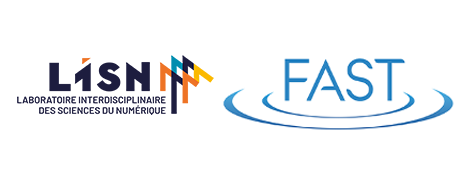
Fibrous media, and especially natural fibre based materials such as paper, non-woven cellulosic filters, or cotton fabrics, are heavily used for a variety of applications, many involving an interaction with a liquid (e.g. liquid absorption, filtration of droplets from an aerosol…), in particular with liquid-air interfaces. I will illustrate some of the mechanisms at play in such fiber-liquid interactions with several model experiments. I will first look at the absorption dynamics of solvent on swelling fibres. In the case of isolated droplets placed on a single fibre, we show that fluid is spontaneously released out of the fibre during the absorption. This local expulsion of fluid creates a new droplet at the surface of the fibre, which then interacts with the drops initially presents, inducing motions or even coalescence of the drops. I will discuss the case of liquid bridging two flexible fibers, and of imbibition between two fibers, that involve a coupling between fiber elasticity, swelling, and capillarity. I will then present an experiment on suspensions of flexible hydrogel fibres. There are several ways of forming macroscale elastic structures from a fibre suspension: paper sheets are obtained from the dewatering of a cellulosic fibre suspension on a forming grid, and it has been shown recently that soft gels are formed upon extrusion of a microfibre suspension. Here, by pulling a few fibres through an interface, we are able to extract continuous cylinders of aggregated fibres (or fibrous bundles). We characterize the conditions at which these continuous bundles are formed, and probe their structural and mechanical properties.
Accès Salle des séminaires FAST-LPTMS (Bât. 530, salle C.120, 1er)